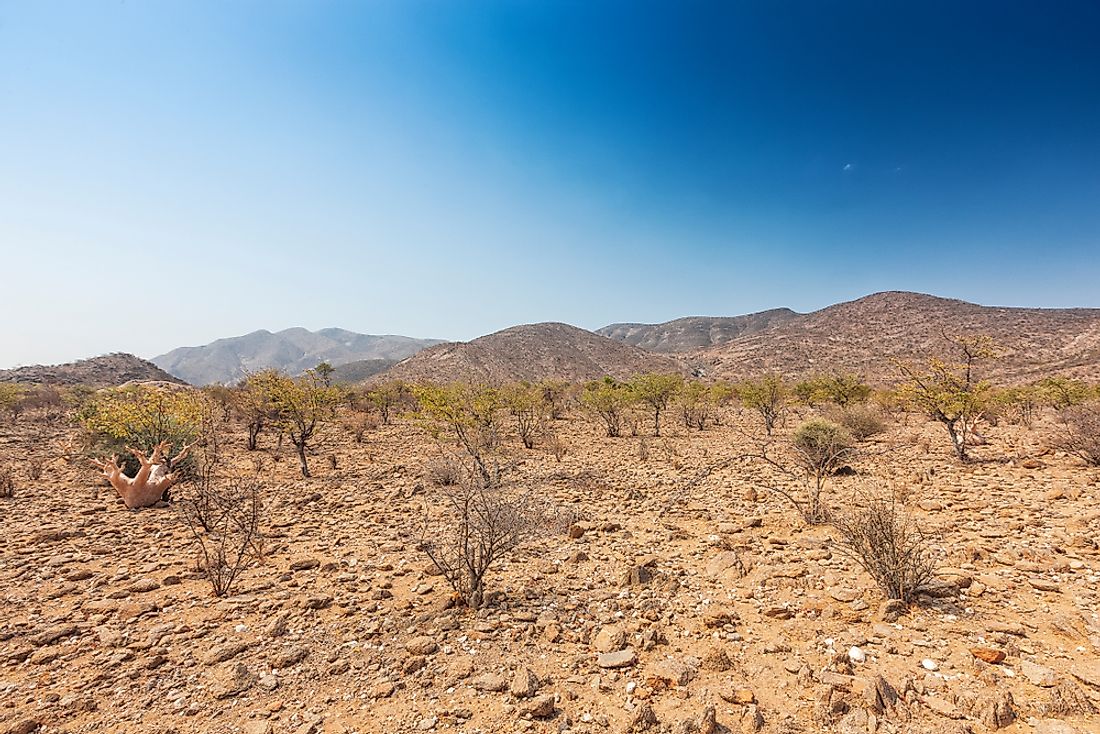Angola's Top National Parks

Over 162,500 square kilometers of Angola’s national territory surface is covered by national parks, reserves, and Nature Park. The creation of protected areas in the country, which comprises of terrestrial and marine, is important for the preservation and conservation of the components of biodiversity. The extent of the protected areas is an indicator of the environmental sustainability in Angola. The environment and the biodiversity of Angola have been greatly affected by Angolan Civil War. Most of the national parks in Angola are currently not functioning as a result of the three-decade war. Angola’s top national parks include:
National Parks of Angola
Bicauri National Park
Bicauri National Park is located in the southwest region of Angola on the Huila plateau covering an area of 3,050 square miles. The park is characterized by sandy hills and shrub thicket while the climate is tropical semi-desert. Bicauri National Park was initially established as a hunting reserve before its reformation into a national park in 1964. It is known for the large mammals including the black buffalos, antelopes, and elephants. The population of these animals was significantly reduced during the civil war since the park was being used as military practice. Poaching and human encroachment also affected their population. Since the end of the civil war in 2002, Huila provincial government has been rebuilding the infrastructure of the Bicauri National Park to attract and protect animals with several herds of elephants returning to the park.
Cameia National Park
Cameia National Park is located in the Moxico province of Angola and covers an area of 558 square miles. The park is dominated by seasonally inundated plains that form part of Zambezi river basin. Miombo woodland that covers the Zambezi basin also extends into the park. The nature in the Cameia National Park is unique to the park and does not occur anywhere else in the country. Cameia National Park was initially established as a game reserve but was transformed into a national park in 1957. The animals in the park were completely wiped out during the civil war. Uncontrolled poaching and lack of wildlife personnel also contributed to the extermination of wildlife in the park. The park is currently undermanaged with little resources and support directed towards its rehabilitation and restoration.
Cangandala National Park
Cangandala National Park is located in Malanje Province of Angola between the Cuije River and the territories of the Cuanza. It is the smallest national park in Angola covering a total area of 232 square miles. Cangandala National Park was created in 1963 to protect the Giant Sable Antelope but was upgraded to a national park in 1970. It consists of undulating sandlime with an open mosaic miombo bushveld and savanna. The park is drained by waterlanes covered by grass. The number of Giant Sable Antelopes in Cangandala National Park has significantly reduced with no actual statistics about the remaining number. Some of the birds found in the park include Pale-billed hornbill, Angola Babble, and Red-capped crombec among other species.
Conservation Efforts In Angola
Due to the prolonged period of civil war and instability in Angola, most of the conservation areas including National Parks and game reserves were completely abandoned. Due to the limited resources and weak administrative structure, the conservation efforts have been affected. However, the Angolan government has established an Agency, Department of Conservation Area, to effectively manage a network of protected areas to conserve the country’s unique biodiversity. The conservation efforts are aimed at rehabilitating, strengthening, and expanding the country’s protected areas.
Angola's Top National Parks
| Angola's Top National Parks | Area |
| Bicauri National Park | 3,050 square miles |
| Cameia National Park | 558 square miles |
| Cangandala National Park | 232 square miles |
| Iona National Park | 5,869 square miles |
| Kavango–Zambezi Transfrontier Conservation Area | 171,000 square miles total (shared with 4 other countries) |
| Luiana National Park | 324 square miles |
| Quiçama (Kissama) National Park | 3,846 square miles |







